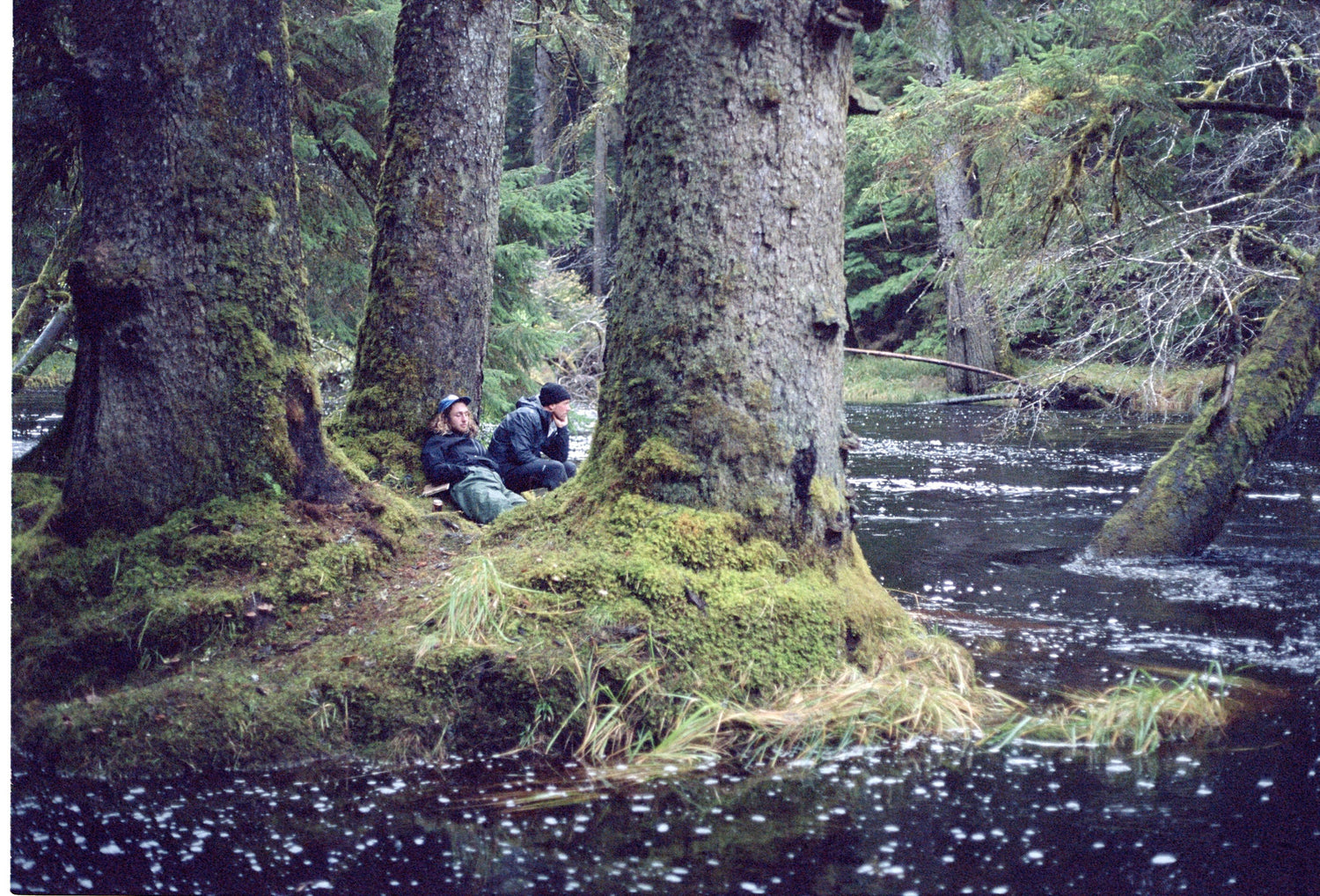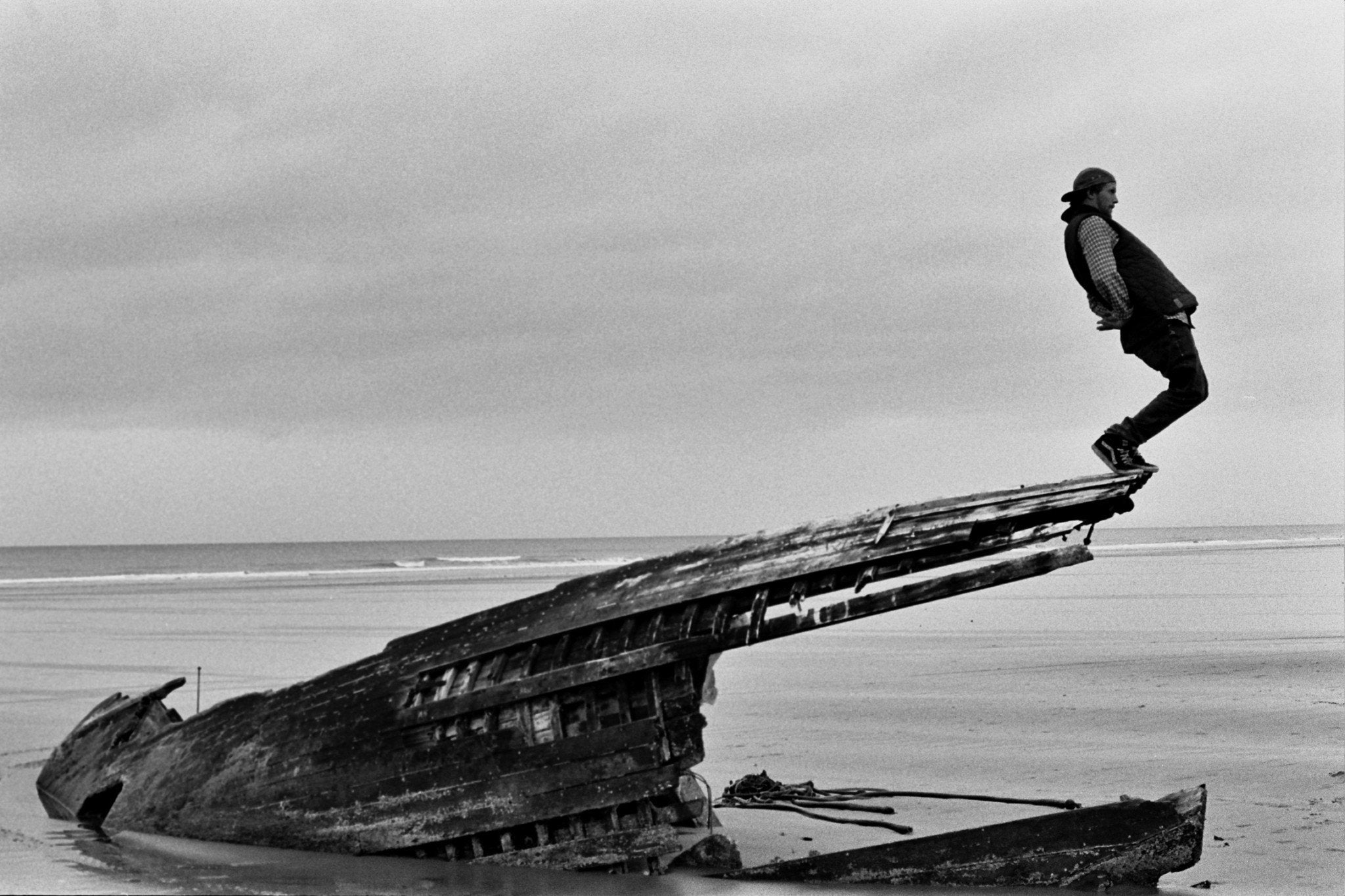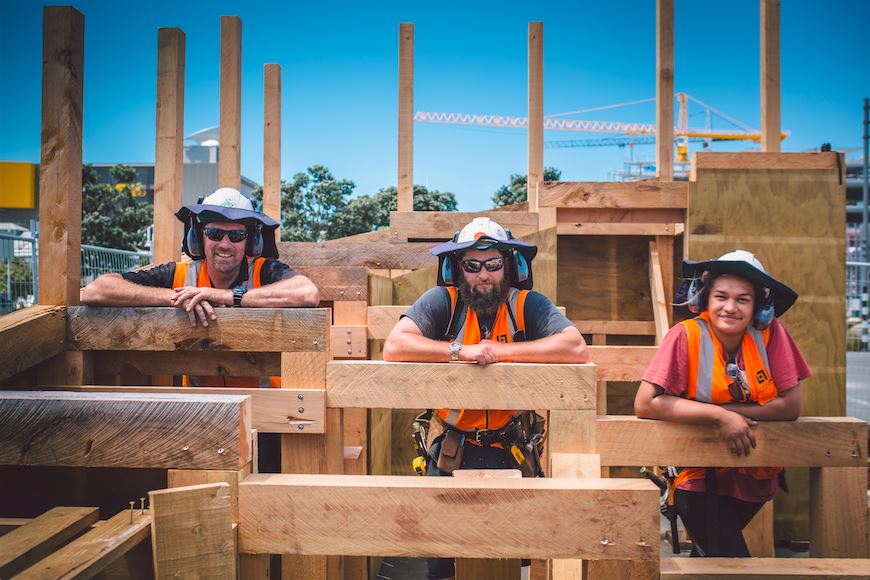
Nature! Photo provided by Arran Jackson.
Arran Jackson and his brother Reid are long time Sitka activists living in tandem with the natural world. They recently spent three weeks riding waves and playing in the forests of one of Canada’s most remote archipelagos: Haida Gwaii. The Jacksons field test Sitka goods, capture surreal analogue and digital footage, ride Sitka boards, and travel around living the Canadian surfer’s dream. These brothers embody Sitka’s essence: they celebrate an authentic appreciation for the wild, and they seek to share its beauty and fortify our connection to the environment. Sitka caught up with Arran Jackson to get the gritty and majestic details of their trip.
Sitka acknowledges Haida Gwaii as traditional, ancestral, and unceded territory of the Haida people. Being unceded means that a treaty between the Crown and Haida was never signed. In 2009, the Council of the Haida Nation successfully moved the B.C. government to change the name from Queen Charlotte Islands to Haida Gwaii as part of a reconciliation agreement to increase acknowledgement of the Haida Nation and its land claim efforts.
Haida Gwaii is located along the Queen Charlotte Fault and is separated from the B.C. mainland by the Hecate Strait. The islands have been situated there for around 20 million years, yet they contain materials dating back 250 million. Jackson says the landscape includes lava formations and a seemingly tropical coastline that is mixed with coniferous trees. He explains that Haida Gwaii is teaming with a variety of natural foods like dungeness crab, fish, mushrooms, mussels and deer; foraging and hunting after surfing all day was not uncommon for the Jackson’s during their visit.
“Art, play and education: Life is an art, play is a must and educating yourself is continuous.”

A clean ride. Photo provided by Arran Jackson.
Sitka: What was the purpose of the trip? Describe a typical day.
Jackson: “Wake up in your bivy sac [a waterproof sock-like cover for a sleeping bag] under the tarp and try to get your pants on while staying dry. Get the coffee going and look at the ocean. Usually wait till the tide is good or if it’s really raining, just put on your suit and surf basically to keep your clothes dry. Surf, eat, repeat until the tide is wrong and then go look for food. Deer, fish, mushrooms and beer are the staples.”
Jackson describes notable surf spots including areas along the Hecate Strait, which is exposed to swells this time of year. He describes ideal offshore winds and perfect groomers every day. He also mentions Rose Spit, a mystical low lying peninsula that sticks out toward Alaska that features amazing waves, but is difficult to get to.
Sitka: What makes Haida Gwaii so spectacular?
Jackson: “Everything! But mostly the people. The Haida spirit is strong! Culture is alive and well, for settlers and Haida alike. Like most places, the Islands have a "give respect and get respect" thing going on. As long as you give it, the people return it with amplitude. The surf community is young by today's standards, meaning people have space and are willing to share. Crowds and assholes haven't made grumps! It’s not uncommon to meet someone on the beach, have a conversation, and be invited over for a meal! People share everything.”

Humble and happy. Photo provided.
Sitka: What is the general attitude toward environmentalism in Haida Gwaii?
Jackson: “Resource extraction and management has been going on a long time in Haida Gwaii. The landscape has been permanently altered by heavy industrial logging and the introduction of deer. Because of this, the understory has been completely destroyed by the deer who have overpopulated with no predators, which makes for a unique forest. You can walk for miles uninterrupted in what was once impenetrable.”
“Although the land has gone through a dramatic change, it seems the people are not stuck in the past and are optimistic about the future. They take the environment for what it is. The deer are a staple food source. Time moves at a slower pace on the islands, almost a crawling immortal pace. The understanding of acting on behalf of future generations has not been lost like in most of Canada by the rise of the individual agenda, selfishness and ego. I think people are more connected to the environment here because so many people still depend on it for all the essentials. I got the impression that [local]understanding of sustainability is more immediate and deeply rooted.”

Space is big. Photo by Arran Jackson.
Sitka: In what ways do you work to honour Indigenous culture while you were there?
Jackson: “I think one way we can honour Indigenous culture is to be aware that you are a visitor and to acknowledge the traditional territories you visit or live on. This is a very small act, but it all starts with awareness and respect for the people, the land, and the connections between them. Be observant, ask questions and take nothing for granted. These are not our lands and not our culture. I think the best mindset is to think of ourselves as allies. A shit ton of damage has been done throughout Canadian history to culture, but the Indigenous spirit is strong. I was once told that all the necessary components for healing exist within the people."
"As long as we keep this in mind, we can learn a lot about forming connections to our environment and learning to become present in our current space and time. As awareness of the connection to our space increases, our inherent need to protect the environment increases with it. The more people we can get off the couch and detached from the consumerism and self centred realities and into a connection with the natural world, the healthier our population and environment will be! It’s a symbiotic relationship. Environmental stewardship needs to be passed on to the next generation. I try and educate others and share this understanding.”

Hiking is to surfing as wetsuit is to skin. Photo provided by Arran Jackson.
Sitka: In what ways did you feel connected to the land while you were there?
Jackson: “In every way! Following weather and tide cycles and playing in the ocean daily as well as eating directly from the land creates a sort of synchronicity. Sleeping outside amplifies that. You learn to find a rhythm.”
If you want to see more Jackson brothers’ adventures, check out the 2013 Sitka film, the Fortune Wild, that they created from another trip to Haida Gwaii. You can watch it on iTunes here: itunes.apple.com/CA/movie/id928738685


